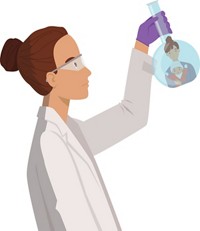Advertisement
Grab your lab coat. Let's get started
Welcome!
Welcome!
Create an account below to get 6 C&EN articles per month, receive newsletters and more - all free.
It seems this is your first time logging in online. Please enter the following information to continue.
As an ACS member you automatically get access to this site. All we need is few more details to create your reading experience.
Not you? Sign in with a different account.
Not you? Sign in with a different account.
ERROR 1
ERROR 1
ERROR 2
ERROR 2
ERROR 2
ERROR 2
ERROR 2
Password and Confirm password must match.
If you have an ACS member number, please enter it here so we can link this account to your membership. (optional)
ERROR 2
ACS values your privacy. By submitting your information, you are gaining access to C&EN and subscribing to our weekly newsletter. We use the information you provide to make your reading experience better, and we will never sell your data to third party members.
Employment
Office Hours
How to create a supportive mental health environment in your lab
Faculty can do these 3 things to help their students struggling with mental health issues
by Jen Heemstra
July 3, 2019
| A version of this story appeared in
Volume 97, Issue 27

I would like to raise mental health awareness among faculty members within my department. I think there is generally a lack of awareness and advocacy for student mental health, particularly for graduate students. I would like to ask if you have specific advice on what I can do as a faculty member and what obstacles I should anticipate.—Anonymous assistant professor
Welcome to the second half of a two-part Office Hours series tackling this difficult yet extremely important question. In last month’s column, I proposed that faculty need to first take care of our own mental health so that we can lead by example and be prepared to help our students. Now that you’ve secured your own oxygen mask, you’re ready to assist the person sitting next to you. Creating an environment that supports student mental health requires that we do three things: recognize the challenge, take action, and empower others.
Recognize the challenge.In a 2014 survey of more than 300 graduate students by Nadine Kaslow and colleagues, 34.4% reported moderate to severe depression, 7.3% had thoughts of suicide, and 2.3% had plans for suicide. This study was conducted at a single university, but a nationwide survey shows similar trends for depression among graduate students. While the nationwide survey did not look at suicide statistics, the data from Kaslow’s study suggest that when you sit in a seminar room with 40 grad students, it’s possible that 14 of those students are struggling with depression, 3 are considering suicide, and 1 has a suicide plan. These are numbers that we can’t ignore. We also need to understand what mental illness is and isn’t. Mental illness is not a choice. It is not feeling sad, lacking motivation, or worrying too much. Those are the symptoms, not the cause. Mental illness is a physical illness. Like other illnesses, it can be traced to biochemical disruptions that impair the normal functioning of our cells. In the case of mental illness, those cells just happen to be in the brain.
Take action. As group leaders, we must ensure lab safety. We are responsible for putting in place policies and training to minimize the risk of physical injury from the chemicals or equipment used in our labs. We also have a responsibility to minimize the risk of mental injury by creating environments that support psychological safety. One example of a practical action you can take is to craft a well-being policy for your lab. This policy can articulate your support for things such as students taking time out of lab to visit a mental health professional or traveling home to cope with the loss of a family member. My own lab policy includes both of these items as well as flexible work hours to promote healthy work-life integration. Sometimes the science sets our schedule for us, so I encourage lab members to go to the gym or run errands during the day if that is what will allow them to use their time most efficiently.
We are also responsible for responding when an accident does occur. For example, if someone in our lab spills a chemical in their eye, we know to assess the nature of the spill, start the eye wash as quickly as possible, and then transport to a hospital or clinic if needed. The same process applies when responding to a mental health emergency—we need to assess the risk of harm to that person or others, listen and respond with support and reassurance, and encourage follow-up with a mental health professional. Just as there is a good chance we’ll have to respond to an accident in lab at some point in our careers, there is a good chance we’ll have to respond to a student mental health crisis. We need to be prepared for both.
Empower others. While there is much we can do as faculty to support student mental health, we are not the only ones who can create change. Many successful initiatives are driven by students, postdocs, and staff. As faculty, we can empower and partner with those around us who are taking positive action.
If this topic feels overwhelming, you are not alone. We were trained to be scientists, not mental health advocates. The good news is that we are capable of learning and growing, and we can achieve big strides even through small efforts. The next generation is counting on us to get this right.

Jen Heemstra is an associate professor of chemistry at Emory University who shares advice on Twitter @jenheemstra. Find all her columns for C&EN and ask her questions at cenm.ag/officehours.
Views expressed are those of the author and not necessarily those of C&EN or ACS.





Join the conversation
Contact the reporter
Submit a Letter to the Editor for publication
Engage with us on Twitter